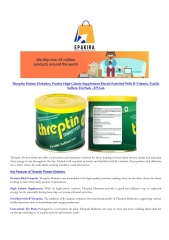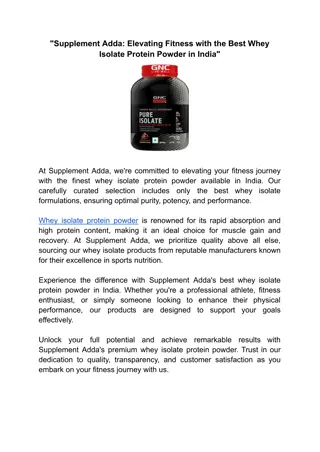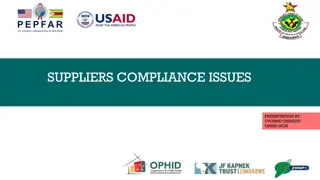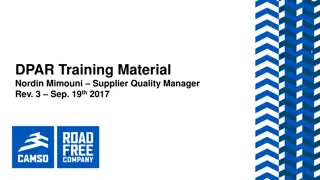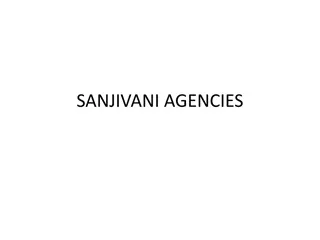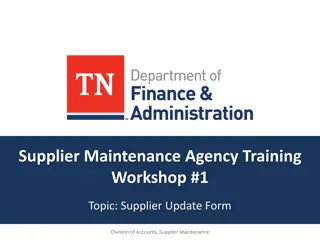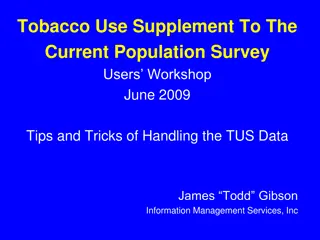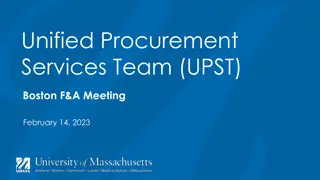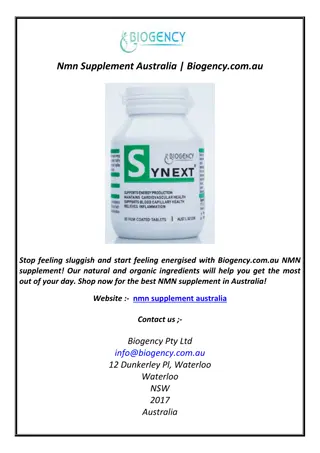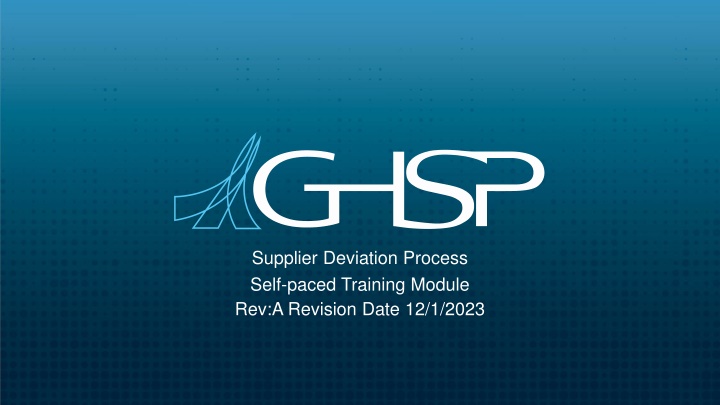
Supplier Deviation Process in Quality Management
The Supplier Deviation Process involves identifying and communicating temporary changes in products or processes to ensure compliance with standards. This process is crucial for maintaining product quality, minimizing risks, and preventing potential recall events. Learn when to use or not use a Supplier Deviation, training objectives, and the purpose of the process through practical examples provided in this comprehensive guide.
Download Presentation

Please find below an Image/Link to download the presentation.
The content on the website is provided AS IS for your information and personal use only. It may not be sold, licensed, or shared on other websites without obtaining consent from the author. If you encounter any issues during the download, it is possible that the publisher has removed the file from their server.
You are allowed to download the files provided on this website for personal or commercial use, subject to the condition that they are used lawfully. All files are the property of their respective owners.
The content on the website is provided AS IS for your information and personal use only. It may not be sold, licensed, or shared on other websites without obtaining consent from the author.
E N D
Presentation Transcript
Supplier Deviation Process Self-paced Training Module Rev:A Revision Date 12/1/2023 GHSP Confidential
Training Objectives Describe what the Supplier Deviation process IS and IS NOT Define when the Supplier Deviation form is required Identify the work that is required in advance of submitting the form Review key items for gaining first time Supplier Deviation approval Demonstrate master Good example GHSP Confidential
What a Supplier Deviation is and is Not A Supplier Deviation is a process to identify, understand and communicate a request for a TEMPORARY product and/or process change that meets the scope of AIAG PPAP. The Supplier Deviation form requires an understanding of what the deviation is, the cause of the deviation, associated potential failure modes and a plan to return to the normal state. A Supplier Deviation IS NOT a method to implement permanent change or release change documents. The SREA process applies GHSP Confidential
What is the Purpose? The Supplier Deviation Process is to exhibit that you, as a supplier, proactively identify and communicate a temporary change to a production intent product or business process. Further, the Supplier Deviation Process exhibits that you understand the reason for change, the potential risk of the change and have a plan to return to the normal state. Failure to follow this process has the potential of creating a recall event (worst case) and create chaos for GHSP and our customer. GHSP Confidential
Examples of when to use a Supplier Deviation (Not All-Inclusive) When shipping production intent parts that do not meet drawing specifications where the drawing specification will not change. When shipping production intent parts that do not meet drawing specifications with an Engineering Change in process to change print to match part. When a business process is temporarily changed and does not affect form/fit/function of a production intent part. GHSP Confidential
Examples of when not to use a Supplier Deviation (Not All-inclusive) When shipping a pre-production product that meets design specifications When the requested change is permanent When a design record is required to be updated When shipping production intent product without PPAP approval and a pending design change GHSP Confidential
Preparing and Planning Before sending GHSP a deviation request, work through: What product is affected by the deviation? Is the product in launch or production? What GHSP facilities are affected by the deviation? What specifically is the deviation? What is the reason for deviating? What is the risk, both internally and externally, of deviating? (Check the PFMEA) What are the specific actions required to return to the normal state? Keep in mind the 3W s (Who, What and When) GHSP Confidential
Filling out the Supplier Deviation Form See either www.ghsp.com/supplier/policies&procedures or contact a GHSP Supply Chain Representative for the Supplier Deviation form. 1. Insert Supplier Name 2. Insert GHSP part number as shown on the current design record, including revision 3. Define who the GHSP Supply Chain Representative is 4. Define whether the part is in production or launch 5. Define whether a product or process deviation 1 2 4 5 3 GHSP Confidential
Filling out the Supplier Deviation Form 6. Describe the deviation in a way that reads like a story. Explain what the deviation is (current state versus expected state) and quantify the deviation. Include number of parts affected, how big the effect is, where the deviation is occurring, etc. 7. Select all GHSP sites affected. If unsure contact your SCR prior to submitting the form. 6 7 GHSP Confidential
Filling out the Supplier Deviation Form 8. Describe the reason for the request. What is the root cause for the product / process to not be at the expected state. 9. Describe the potential failure modes of the deviation. What is the risk of the temporary product / process change? Reference the PFMEA and DFMEA (f available) for failure modes. 8 9 GHSP Confidential
Filling out the Supplier Deviation Form 10. Document the action plan required to return to the expected (normal) state. When creating actions document the 3W s (What, Who, When). Actions must be clearly defined. 11. Define who will be responsible for labeling containers with deviation number 12. Define who will communicate deviation closure and when the deviation will be closed 10 11 12 GHSP Confidential
Deviation First Time Approval Strategies Collect data showing a deviation from the design record prior to submitting the request (layout data, performance testing, etc.) Understand and document the root cause of the deviation from the design record prior to submitting the request. Ensure the problem solving has been completed at least through identification of permanent corrective action. Understand the failure mode from the FMEA prior to submitting the request. If unclear to what the failure mode is work with your Supply Chain Representative to gain an understanding. Have a timing plan in place for permanent corrective actions prior to submitting the request. Identify a closure date when you will report back to GHSP the permanent corrective actions have been completed and the deviation is closed. GHSP Confidential
Master Good Form Example All fields correctly filled out. Description is thorough, root cause is identified, failure mode is understood, action plan is complete with 3W s in place. GHSP Confidential
Rejected Now What? Seek to understand why Not feasible due to product risk (warranty, quality, safety, assembly) Timing not feasible Action plan not accepted Consider the reason for rejection and resubmit if applicable Develop an alternative plan that does not require deviation in order to fulfill GHSP requirements Respect the decision, GHSP will make every effort to be collaborative and work together GHSP Confidential

